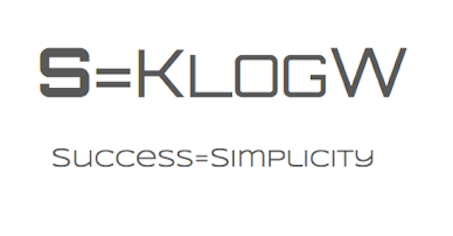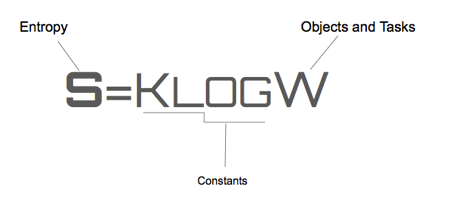Entropy and Entrepreneurship: Why the Successful Simplify
 Have you ever wondered why Steve Jobs always wore the same black turtleneck or why the founder of Southwest Airlines, Herb Kelleher, eats the same cheese and crackers every single morning? The reason these successful entrepreneurs simplify could be due to the same reason a cloud of smoke swirls and dissipates in the air or why the universe is expanding—it could be because of entropy.
Have you ever wondered why Steve Jobs always wore the same black turtleneck or why the founder of Southwest Airlines, Herb Kelleher, eats the same cheese and crackers every single morning? The reason these successful entrepreneurs simplify could be due to the same reason a cloud of smoke swirls and dissipates in the air or why the universe is expanding—it could be because of entropy.
We don’t need to get into physics jargon to understand entropy. Entropy stems from a natural law dictating that disorder always increases; the only way to stop it is by putting in work. Think about your desk after a busy week. It’s probably a cluttered mess of coffee cups and papers. This is the disorder of entropy. Your space only stays ordered if you work to keep it that way.
What does entropy have to do with Job’s wardrobe or Kelleher’s diet? Let’s revisit the desk analogy. Instead of getting a new disposable cup with every refill, what if you made it a point to reuse a single coffee mug? What if you also made it a point to keep your work materials condensed in a single binder? Now, your space stays easily organized with only one mug and one binder. By reducing the number of objects, you can slow disorder without extra work. This is what Jobs and Kelleher practiced: More order with less work.
Jobs and Kelleher aren’t the only entrepreneurs who leveraged entropy: Simplicity was Elon Musk’s guiding philosophy leading up to his first success with Zip2 (his internet mapping project before PayPal). In his Zip2 days, Musk shared a two-bedroom apartment with his brother. They had no furniture, just a couple of bare mattresses on the floor.
Yvon Chouinard, the founder of Patagonia, ascribes to a similar philosophy. After getting married, Yvon and his wife lived out of a van parked near their workshop. Their only possessions were what could fit in this van. Yvon’s sacrifice and focus were essential to the growth of Patagonia, which doubled in size during this time.
Physical objects aren’t all that add to the chaos of entropy. The number of tasks is equally important. In the examples above, entrepreneurs had to find a way to minimize both (objects and tasks), while nearly hitting a tipping point. Once they shed enough extraneous belongings and tasks, they break through to their first success—After this, they start paying people to reduce entropy for them.
There’s an equation for entropy that’s almost a mantra for me; S=KlogW. I promised no physics jargon earlier, but this equation perfectly explains why it’s so important to reduce and simplify. The equation roughly translates to entropy (S) is proportional to the number of objects (W). If you keep reducing W (the objects and tasks), you will minimize chaos. This equation is meant for statistical mechanics, but it might be the equation for success.

From personal experience, the hardest part isn’t getting rid of physical objects - the hardest part is finding mental focus and ignoring distractions disguised as opportunity. Entrepreneurs seek opportunity, and opportunity frequently finds them. But the second law of thermodynamics demands that entrepreneurs push some opportunities away. If they don’t, entrepreneurs risk staying stuck in failed-venture saṃsāra, running from task to task as the chaos of a new start-up swirls around us.
Those who escaped the chaos, like Jobs or Kelleher, didn’t waste their energy trying to fight entropy. Instead, they simplified. Maybe they weren’t thinking about statistical mechanics when they did, but their approach tipped the probability of success in their favor.
